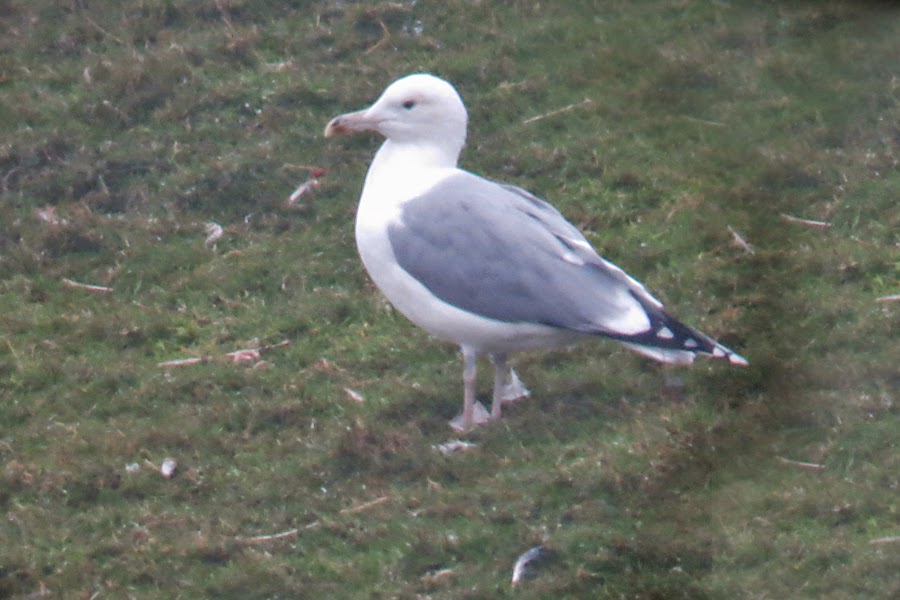I saw the probable hybrid second-year Caspian Gull, that I mentioned in my previous post, again on Wednesday, but this time at the A5 Lagoons.
When I first saw it at the landfill site I initially thought it looked OK, but there was something about it that made me question whether it was pure. It is not unusual for Caspian Gulls to look different from one minute to the next and this was the case with this bird. It wasn't by any means a classic and its coverts especially the greater coverts where not typical. Hybrids can be difficult, especially if they show mostly Caspian Gull like features. It could so easily be OK, but its pale eyes, larger than normal head and the pattern across the coverts left me feeling uneasy.
It was difficult to photograph as it was always face on to me.
When I first saw it at the landfill site I initially thought it looked OK, but there was something about it that made me question whether it was pure. It is not unusual for Caspian Gulls to look different from one minute to the next and this was the case with this bird. It wasn't by any means a classic and its coverts especially the greater coverts where not typical. Hybrids can be difficult, especially if they show mostly Caspian Gull like features. It could so easily be OK, but its pale eyes, larger than normal head and the pattern across the coverts left me feeling uneasy.
It was difficult to photograph as it was always face on to me.
 |
| Probable Caspian x Herring Gull Hybrid |






















































































